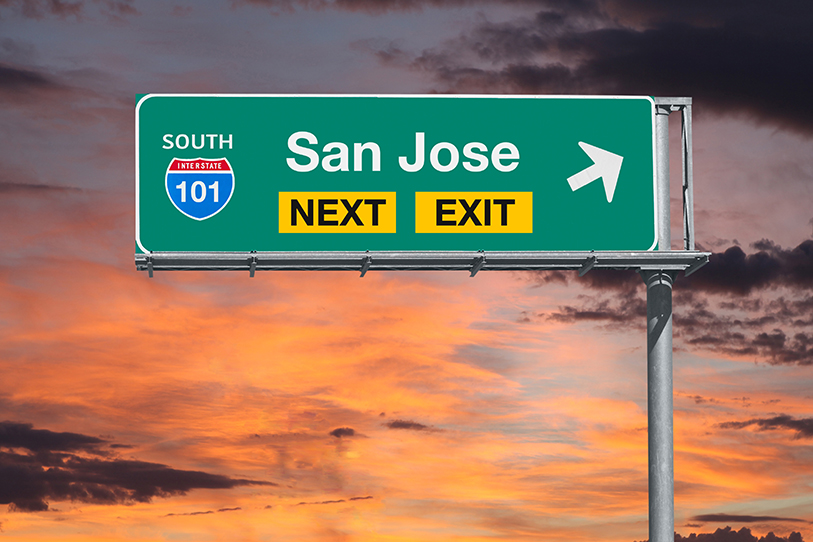On January 5, 2021, San Jose’s City Council approved an urgency ordinance extending the city’s supplemental COVID-19 paid sick leave to June 30, 2021. Passed as an urgency measure, the ordinance is effective retroactively to January 1, 2021. In addition to extending the expiration date, the ordinance was revised to include employers of all sizes, meaning it’s no longer limited to larger employers with 500 or more employees.
Expanded Employer Coverage
Since April 2020, San Jose has been one of several localities with a supplemental COVID-19 paid sick leave ordinance. Like many of these other local ordinances, San Jose’s ordinance was aimed at employers with 500 or more employees who were not covered by the Families First Coronavirus Response Act (FFCRA). Now that the FFCRA was not extended, employers with fewer than 500 employers are no longer mandated to provide up to 80 hours of emergency paid sick leave (EPSL) for COVID-19-related reasons, and up to twelve weeks of emergency family and medical leave (E-FMLA) due to child care or school closures/unavailability related to COVID-19.
San Jose’s revised ordinance, intending to continue EPSL benefits under the original ordinance and the FFCRA, which expired on December 31, 2020, expands its coverage by applying to any “employer” as defined in San Jose’s minimum wage ordinance. In other words, the ordinance now applies to all employers, regardless of size, and covers any employee working at least two hours within the geographic boundaries of the city of San Jose.
Through an updated Frequently Asked Questions document (FAQs) released by San Jose’s enforcement agency, the Office of Equality Assurance, it’s clarified that in order to be eligible for the EPSL, an employee must leave their own residence to perform work for the employer and be unable to telecommute.
Covered Uses and Amount of Sick Leave Remain the Same
The covered uses under the revised ordinance are the same as those available under the initial ordinance. An employee may use EPSL if they’re unable to work or telework because they’re:
- Subject to a federal, state or local quarantine or isolation order related to COVID-19, or caring for someone who is quarantined or isolated due to COVID-19;
- Advised by a health care provider to self-quarantine due to COVID-19 or caring for someone who is so advised by a health care provider;
- Experiences symptoms of COVID-19 and seeking a medical diagnosis; or
- Caring for a child because of a school closure or childcare provider unavailability due to COVID-19 precautions.
Full-time employees are allotted 80 hours of sick leave, and part-time employees receive sick leave equal to the number of hours they work on average over a two-week period. An employer may not require an employee to use other paid leave provided by the employer prior to using paid sick leave under the ordinance.
Notably, the revised ordinance doesn’t provide eligible employees any additional amount of time. According to San Jose’s FAQ document, eligible employees are entitled to a maximum of 80 hours of paid sick leave beginning April 7, 2020, through June 30, 3021, unless otherwise revised by ordinance.
Rate of Pay
Similar to the original ordinance, the sick leave hours for the employee’s own purposes must be paid at no less the employee’s regular rate of pay or the applicable minimum wage rate — whichever is greater (subject to a daily cap of $511 per day and $5,110 total). An employee using the leave to care for another is paid at 2/3 the employee’s regular compensation rate, up to $200 per day and $2,000 total.
Exemptions
The ordinance’s sick leave provision is not required when employees are able to work from home.
Additionally, the ordinance doesn’t apply to any employer that on the effective date of the ordinance, provides its employees with some combination of paid personal leave at least equivalent to the amount of paid sick time required by the ordinance. However, to the extent that such paid personal leave is less than what’s required by the ordinance, the employer must make up for the deficiency.
Employers with employees working in San Jose should review details of the ordinance and the city’s updated FAQs to learn more about the latest changes (and periodically monitor the Office of Equality Assurance website for any updated guidance), and consult legal counsel with any questions on how to comply.
Don’t Forget About Other Local Supplemental Paid Sick Leave Ordinances
Los Angeles City, Long Beach and San Francisco all have ordinances that, based on their original language, continue into 2021. Sacramento City and Sacramento County’s ordinances were extended to March 31, 2021, and San Mateo County’s was extended to June 30, 2021.
Other localities currently exploring what to do with their local supplemental paid sick leave ordinances include Los Angeles County, Oakland and Santa Rosa. Stay tuned as HRWatchdog will continue monitoring the status of local supplemental sick leave ordinances.
Bianca N. Saad, Employment Law Counsel/Subject Matter Expert
CalChamber members can read more about San Jose’s Minimum Wage Ordinance and Opportunity to Work Ordinance on HRCalifornia. Not a member? See what CalChamber can do for you.




